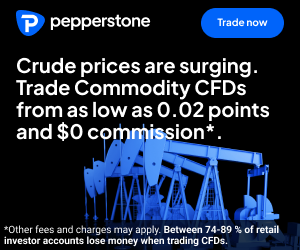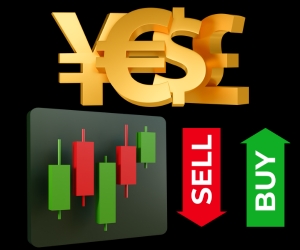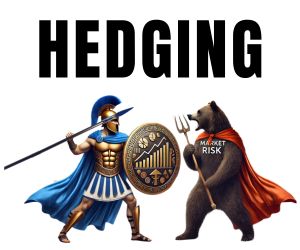IMPLIED VOLATILITY AND ITS ROLE IN FOREX TRADING
Implied volatility (IV) is the market’s forecast of how much a currency pair is likely to move in the future. Unlike historical volatility, which looks back at past price swings, IV is derived from option prices and reflects traders’ expectations of risk ahead. In Forex, IV is a vital tool: it shapes option premiums, signals potential breakouts, and helps traders adjust position sizes. In this article, we explain the basics of implied volatility, show how it connects to options pricing, and explore how traders use it to manage risk in currency markets.

Implied Volatility Basics
Implied volatility, often shortened to IV, is one of the most closely watched measures in modern finance. At its core, it represents the market’s expectation of how much an asset—here, a currency pair—will move over a given time horizon. Unlike historical volatility, which is calculated from past price data, implied volatility looks forward. It is not a direct observation of price swings but a figure extracted from option prices, reflecting the consensus of traders, investors, and institutions about future uncertainty.
The Difference Between Historical and Implied Volatility
Historical volatility measures what has already happened. It tells us, for example, that EUR/USD moved an average of 0.5% per day over the past month. This backward-looking measure is useful but limited—it cannot predict whether tomorrow’s moves will be larger or smaller. Implied volatility, by contrast, is forward-looking. It is derived from what traders are currently willing to pay for options. If option premiums rise, it signals that traders expect bigger swings in the near future. If they fall, the market is pricing in calm conditions. The key point is that implied volatility reflects expectations, not past reality.
How Implied Volatility Is Expressed
Implied volatility is expressed as an annualised percentage, even though it can apply to options with much shorter maturities. For instance, an implied volatility of 10% on EUR/USD means the market expects the pair to move up or down by about 10% over the course of a year (one standard deviation). In practice, traders use this number to gauge the likelihood of certain price ranges. A higher IV suggests the market is bracing for turbulence; a lower IV indicates expectations of stability. Importantly, IV says nothing about direction—it measures the magnitude of expected moves, not whether the currency will go up or down.
The Role of Options Markets
The Forex spot market does not directly quote implied volatility. Instead, IV is extracted from the options market, where traders buy and sell contracts that give the right—but not the obligation—to exchange currencies at set prices in the future. Options prices incorporate the market’s collective view of risk: if traders expect big swings, they demand higher premiums. From these premiums, models such as Black-Scholes or Garman-Kohlhagen can back out the implied volatility figure. Thus, IV is less about a formula and more about a market consensus encoded in prices.
Why Implied Volatility Matters in Forex
For spot Forex traders, implied volatility is not just an academic number. It provides a forward-looking barometer of market conditions. When IV spikes, it warns that markets expect larger moves ahead—perhaps because of looming economic data, a central bank meeting, or geopolitical tension. This information helps traders adjust their strategies: they may widen stops to account for noise, cut position sizes to manage risk, or prepare for breakout trades. Conversely, when IV falls, traders know that markets expect calm conditions, which may favour range-bound strategies.
Short-Term vs Long-Term Implied Volatility
Implied volatility comes in many maturities. One-week, one-month, three-month, and one-year IVs are all quoted in the options market. Short-term IVs respond quickly to news and events, making them highly sensitive barometers of near-term risk. Longer-term IVs move more slowly, reflecting structural expectations about policy, growth, and inflation. Traders often compare short-term and long-term IV to gauge whether current uncertainty is a passing storm or part of a broader shift. A sharp rise in one-week IV ahead of a Federal Reserve meeting, for example, may not alter the three-month outlook—unless the policy change signals something lasting.
The Smile and the Skew
In reality, implied volatility is not uniform across all strike prices. Traders often talk about the “volatility smile” or “skew”—patterns that show where demand for protection is highest. In Forex, skew often reflects hedging demand. For instance, if traders fear euro weakness, out-of-the-money puts on EUR/USD may become more expensive, lifting IV on the downside relative to the upside. Spot traders can read these patterns as clues about where big players see risk. A steep skew towards downside options may indicate market anxiety about devaluation or crisis.
Historical Episodes of Implied Volatility Spikes
Implied volatility tends to spike around major events. During the 2008 financial crisis, IV on most major currency pairs surged as liquidity dried up and panic set in. Similarly, in June 2016, when the Brexit referendum surprised markets, implied volatility on GBP/USD soared to historic highs. More recently, in March 2020, the onset of the COVID-19 pandemic sent IV rocketing across G10 and emerging-market pairs. Each of these episodes illustrates how IV acts as a real-time stress gauge: when uncertainty rises, so do option premiums, and implied volatility sends a clear signal of market fear.
Limitations of Implied Volatility
While powerful, IV is not infallible. It is a reflection of market expectations, which can be wrong. High implied volatility does not guarantee large moves—markets may brace for fireworks that never come. Likewise, low IV does not guarantee calm; shocks can still erupt without warning. Moreover, IV is influenced by liquidity conditions in the options market itself. Thin trading can distort the signal. For this reason, experienced traders treat implied volatility as one tool among many, combining it with technical analysis, macro data, and sentiment indicators for a rounded view of risk.
Why Every Trader Should Track IV
Ultimately, implied volatility matters because it offers insight into what the market collectively expects. It can help a day trader decide whether to chase a breakout or stick to a range. It can help a swing trader size positions and set stops with greater accuracy. And it gives long-term investors a window into the level of risk priced into currencies. In an arena as global and interconnected as Forex, ignoring implied volatility is like driving without a weather forecast—you may still reach your destination, but you are flying blind to the storms ahead.
Options & Pricing
Implied volatility in Forex is inseparable from options markets, because it is extracted directly from option premiums. Options are derivative contracts that give the holder the right, but not the obligation, to exchange currencies at a specific rate on or before a given date. The price of that option reflects not only the spot rate and interest rate differentials, but also the market’s estimate of how much the underlying currency is likely to move. This estimate, reverse-engineered from pricing models, is what we call implied volatility.
How Options Reflect Expectations
Traders buy options to protect against risk or to speculate on moves. If a company fears the euro will weaken against the dollar, it may buy EUR/USD put options to lock in a favourable exchange rate. If investors expect volatility ahead of a major event like a Federal Reserve decision, they may buy both calls and puts, betting on large swings either way. This demand drives up option premiums, and the higher the premium, the higher the implied volatility derived from it. In other words, options markets act as insurance markets, and the cost of insurance reflects how worried traders are about turbulence.
Option Pricing Models
To extract implied volatility, traders rely on pricing models. The Black-Scholes model, though originally designed for equities, has been adapted to Forex through variations such as the Garman-Kohlhagen model. These models take inputs such as the spot price, strike price, time to expiration, and interest rate differentials, and then calculate what the option should be worth under different assumptions of volatility. By comparing the model’s output with the actual market price, traders solve for the volatility figure that makes the two match—this is the implied volatility.
Volatility Surfaces and Term Structures
In practice, traders don’t just look at a single implied volatility number. They examine the entire “volatility surface,” which maps IV across strike prices and maturities. A steep curve may suggest heavy demand for downside protection; a flat curve may indicate balanced sentiment. Similarly, the term structure of volatility—how IV changes from one-week to one-month to three-month maturities—offers clues about whether risks are seen as temporary or persistent. A spike in one-week IV around a central bank meeting, for example, may not affect the one-year IV, suggesting that traders see the risk as short-lived.
Risk Reversals and Market Sentiment
One unique feature of the Forex options market is the use of “risk reversals,” which compare the implied volatility of out-of-the-money calls to out-of-the-money puts. A positive risk reversal means calls are more expensive than puts, signalling bullish sentiment on the currency. A negative risk reversal suggests the opposite. For example, before the Brexit referendum, GBP/USD risk reversals plunged deep into negative territory, showing that traders were paying up for downside protection. Spot traders who followed these signals were better prepared for sterling’s sharp decline when the vote came in.
The Impact of Economic Events
Economic releases and central bank meetings often drive short-term spikes in implied volatility. Ahead of a U.S. nonfarm payrolls release, for instance, one-week IV on USD pairs may climb sharply as traders brace for surprises. Once the data is out and uncertainty clears, IV typically falls. This pattern—known as “volatility crush”—is common in options markets. Spot traders can use this information to anticipate higher spreads, faster price action, and potentially larger intraday ranges during event windows.
Practical Takeaways for Spot Traders
Even if you never trade options directly, understanding how they shape implied volatility is invaluable. Option premiums are the purest expression of market fear or complacency. When premiums rise, IV sends a clear warning: brace for bigger swings. When they fall, IV suggests calmer waters. Spot traders can use these cues to adjust leverage, choose strategies, and decide whether to seek breakout opportunities or stick with range trading. In this sense, options pricing is less about complex mathematics and more about interpreting the market’s collective psychology.
Managing FX Risk
Implied volatility is not just an abstract number; it is a practical risk management tool. By signalling how turbulent markets expect conditions to be, IV helps traders, corporations, and investors decide how much risk to take, when to hedge, and which instruments to use. In the global currency market—where leverage is high and margins for error are slim—using implied volatility effectively can mean the difference between disciplined risk control and uncontrolled losses.
Position Sizing and Volatility Adjustments
For individual traders, implied volatility plays directly into position sizing. Higher IV means larger expected price swings. If you trade the same lot size during high-IV conditions as during low-IV ones, your dollar risk per trade will expand dramatically. A disciplined approach is to adjust trade size inversely with volatility: take smaller positions when IV is high, and larger ones when it is low. This keeps your risk per pip consistent and avoids outsized losses during volatile periods.
Using IV for Stop-Loss and Take-Profit Levels
Stop-loss and take-profit orders are best set with volatility in mind. When implied volatility rises, tighter stops are more likely to be triggered by market noise. By referencing IV, traders can calibrate stops and targets to current conditions. For example, if the one-month implied volatility on EUR/USD doubles, it may be prudent to widen stops to accommodate larger swings—or reduce leverage to keep overall risk in check. IV thus acts as a yardstick for realistic trade parameters.
Hedging Corporate Currency Risk
Multinational companies use implied volatility as a guide when deciding how aggressively to hedge currency exposures. If IV is high, suggesting greater potential swings, corporates may lock in forward contracts or buy options to protect earnings. If IV is low, they might hedge less, reducing costs while accepting more exposure. In both cases, the decision hinges on market expectations of volatility. For CFOs and treasurers, IV provides a forward-looking gauge of how much risk the company is carrying in its balance sheet.
Portfolio Diversification and Risk Spreading
Investors managing broader portfolios also rely on implied volatility to allocate capital. When IV rises across multiple currencies, it signals systemic stress, and investors may reduce exposure to FX altogether in favour of safer assets like bonds or gold. When IV falls, it suggests a calmer environment where higher leverage or larger allocations to currency strategies may be justified. By monitoring IV across pairs, traders can diversify exposure intelligently and avoid concentration in markets expected to be most volatile.
Event Risk and Scenario Planning
Central bank meetings, elections, and economic reports all generate event risk. Implied volatility provides a numeric way to measure how much risk is being priced in. For instance, if one-week GBP/USD IV jumps from 8% to 20% ahead of a Bank of England meeting, traders know the market is bracing for a major move. They can then plan scenarios: What happens if the decision surprises dovishly? What if it shocks hawkishly? With IV as a guide, traders can stress-test portfolios against realistic ranges rather than guesswork.
Volatility Trading Strategies
Some traders go a step further, trading implied volatility itself rather than spot direction. They may buy options when they believe IV is underpriced, expecting premiums to rise, or sell options when they see IV as inflated. Spot traders can adapt this mindset by choosing strategies aligned with volatility. Range trading thrives in low-IV environments; breakout trading suits high-IV regimes. In both cases, implied volatility helps align strategy choice with the prevailing market climate.
Monitoring IV Across Markets
Finally, traders should not view implied volatility in isolation. Comparing IV across currencies offers deeper insight. If IV is elevated in emerging-market pairs but subdued in G10 currencies, it suggests risk is concentrated in specific regions. If IV rises broadly, systemic stress is likely. Monitoring IV across asset classes—equities, bonds, commodities—also helps build a holistic risk picture. In today’s interconnected markets, volatility in one arena often spills over into another, and IV provides a common framework for spotting these links.
The Discipline of Respecting Volatility
At its best, implied volatility acts as a reminder of humility. No trader can predict the future with certainty, but IV offers a market-wide estimate of how unpredictable the future may be. Respecting volatility means respecting risk: sizing trades appropriately, preparing for adverse scenarios, and avoiding complacency when markets appear calm. For those who take it seriously, implied volatility becomes less of a statistic and more of a compass—guiding not only trades but the discipline that underpins long-term success in Forex.








